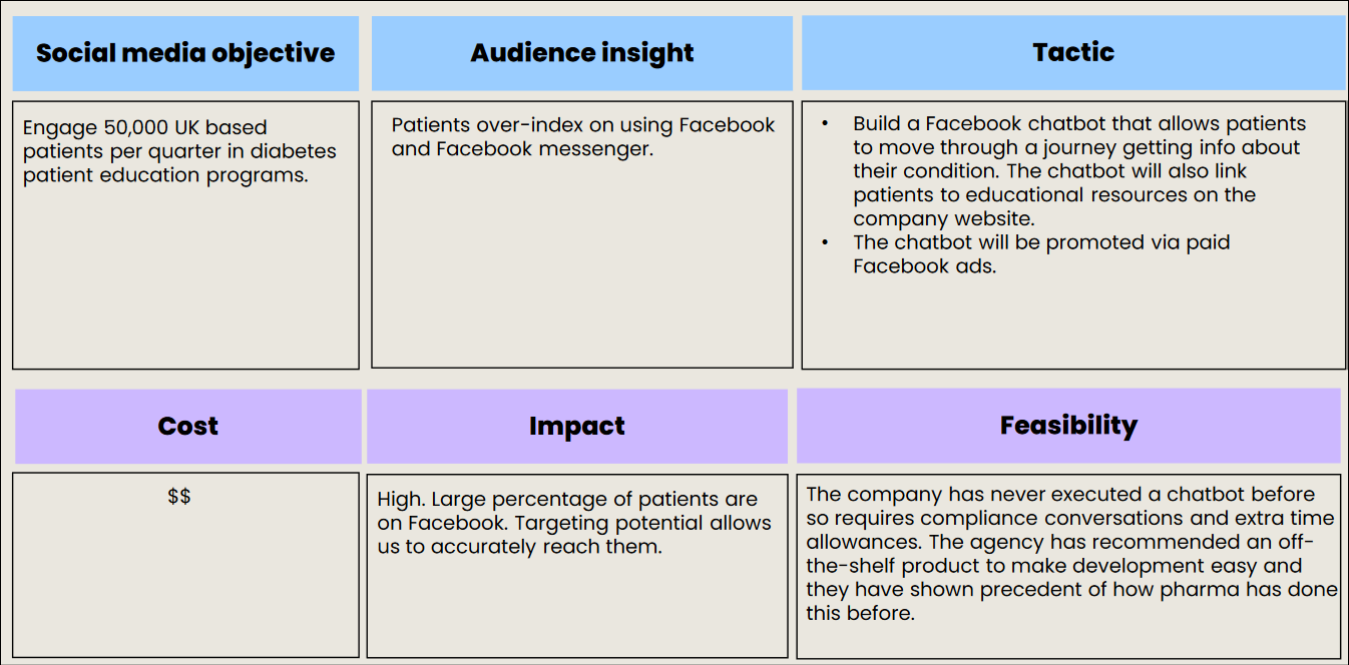Social media and healthcare: the opportunity
Before we get started it's worth spending a few moments to recap on why, as a pharma marketer or communications specialist, you would consider social media as a key part of your go-to-market strategy.
Social media plays an increasingly important role as a source of information and influence on decision making for patients. A recent study by Ogilvy Research and Intelligence1 showed just how powerful social media content is in the patient journey:
Social media plays an increasingly important role as a source of information and influence on decision making for patients. A recent study by Ogilvy Research and Intelligence1 showed just how powerful social media content is in the patient journey:
“I don’t think they’re that interested in industry,” comments Dr Harry Gibbs, Programme Director, Outpatients Programme, and Deputy Director, General Medicine, The Alfred Hospital, Melbourne. He notes that “they can get their [medical] information instantly from elsewhere”, so why should they attend lengthy congresses or sit down with pharma sales reps?3
What to include in your pharma social media strategy
Objectives
Your social media strategy should start with your objectives. Robust, documented objectives make it crystal clear what you are hoping to achieve. Without clear objectives to guide your strategy it becomes difficult to make decisions in your approach and hard to measure the effectiveness of your activity.
When setting your objectives there are two key principles to adhere to:
- Ensure your social media objectives ladder up to your overarching business and marketing objectives. If these are disconnected, proving the value of your activities and investment becomes difficult.
- Ensure your social media objectives include the audience you are targeting, the metrics you are looking to achieve and the target date or timeframe. An example may be "Drive severe psoriasis patients in France to complete the quality of life test, achieving 3,000 tests completed by December 2024."
Audience
Defining your audience can be done in the form of a persona, which is a fictitious representation of a person in your audience. This helps build a common understanding of who you are targeting and helps you make strategic decisions about your channel choices, tactics and content.
You may have already done this at a brand level, for your social media strategy you should then supplement this with social media specifics, such as their wants and needs from social media and the channels they are likely to be active on.
Channels
Your channel planning may either be managed in-house, or may be briefed to a media or social agency to recommend channels that fit your objectives and audience. A critical planning step when deciding on the channels to include is to check internally within your organisation to understand:
- Are there any channels that are pre-approved for use in marketing campaigns? There may be existing social accounts you can leverage.
- Are there any channels that your organisation is not comfortable using? This may result in additional approval hurdles for your campaign so you will know to factor in some extra time.
- Are there existing learnings that can be brought forward from past social campaigns?
- Are there internal teams or subject matter experts you should liaise with?
For each channel you are going to include in your plan (such as Facebook, Instagram, TikTok, LinkedIn, reddit, X) outline the purpose of the channel, the audience you will be targeting there, and the focus for the content on this channel. You might also outline the posting cadence if you are developing organic content.
Pharma social media tactics
Tactics are the building blocks of your strategy, they outline the things you will do to help achieve your objectives. During your initial planning stages it's likely that your tactics may only be described at a high level and you may be evaluating several tactics. For each tactic under consideration you could include the social media objective it relates to, the audience insight that is leading you to consider this tactic, the tactic high level description, cost, impact and feasibility. You can see an example of this from the Social Media Strategy & Planning course below.

Social media content
During the strategic planning phase your focus on content is likely to be at a high level only. This might include your strategic content pillars to define the groups of content you'll likely be producing as part of your campaign on an ongoing basis, or an outline of key campaigns that will run, or expected content to come through from global.
You might also agree on an editorial process for managing content that will be posted from the accounts. Key to remember here, is you may find content fatigues on social media if you run in a paid media campaign (at this point you'd start to see engagement drop). Try to get a wide suite of assets approved by your team up front to allow you to be able to swap out assets without doing new approvals every time.
Tip: avoid creating your social media content in a vacuum. Understanding what is trending on social media and what type of content (topics and formats) your audience is engaging with will help you to create content that resonates. This is particularly important if you are creating organic content. Ask your agency to provide you with trend reports and social best practice sessions.
“A lot of content I’ve seen from pharma is very corporate in style...You can tell the aim is to tick a marketing box rather than to actually engage people.” - Dr Azmain Chowdhury, MD, NHS,3


